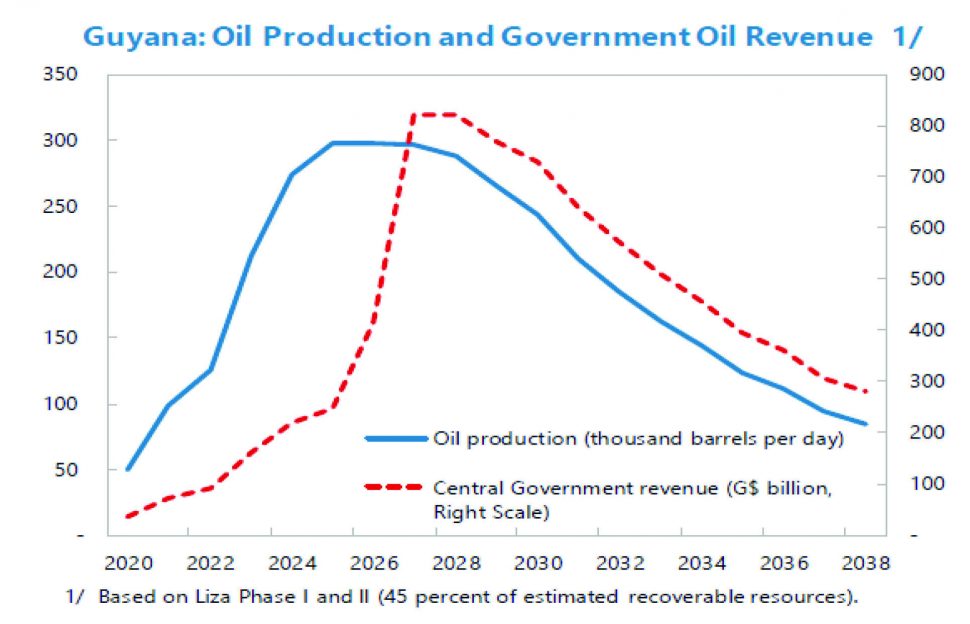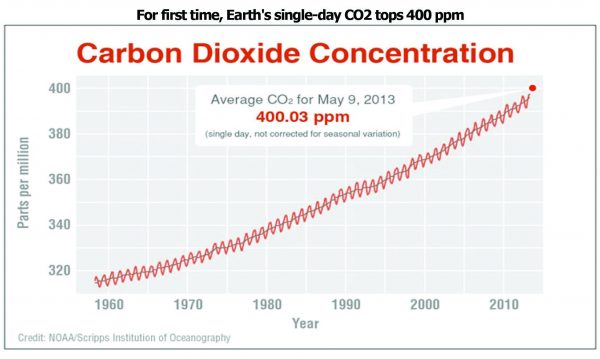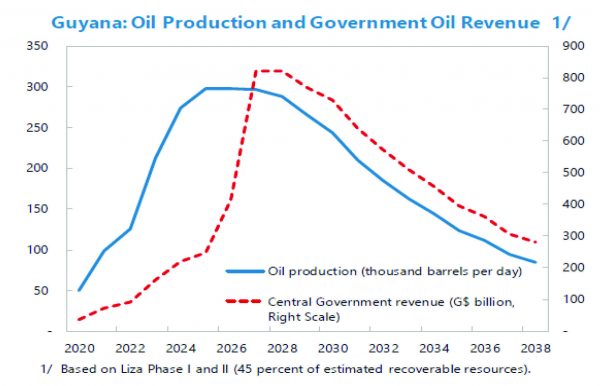But ‘tis a common proof,
That lowliness is young ambition’s ladder,
Whereto the climber-upward turns his face;
But when he once attains the utmost round,
He then unto the ladder turns his back,
Looks in the clouds, scorning the base degrees
By which he did ascend.
William Shakespeare in ‘Julius Caesar’
 Last week, we examined the presentations of the speakers at the recent launch of the A New and United Guyana (ANUG) party. We were unable to consider two items because of space constraints. These are: ensuring that Guyana’s energy needs are met from renewable sources of energy by 2025; and the elimination of the dependence on fossil fuels. While we support all efforts aimed at mitigating the effects of climate change, we have to be realistic about the timelines we set for doing so.
Last week, we examined the presentations of the speakers at the recent launch of the A New and United Guyana (ANUG) party. We were unable to consider two items because of space constraints. These are: ensuring that Guyana’s energy needs are met from renewable sources of energy by 2025; and the elimination of the dependence on fossil fuels. While we support all efforts aimed at mitigating the effects of climate change, we have to be realistic about the timelines we set for doing so.
At the signing of the 2015 Paris Agreement on Climate Change, President Granger reaffirmed Guyana’s commitment to: (i) implement initiatives in the forest and renewable-energy sectors; (ii) move closer towards a 100 percentage renewable power supply by 2025; (iii) contribute to reducing annually the carbon emissions of up to 48.7 million tonnes; and (iv) place under conservation two million hectares of Guyana’s forests.
There is, however, no publicly available information as to how well we are performing in relation to these commitments. Our targets also appear very unrealistic, considering that other countries that are better placed to honour their commitments, have less ambitious targets in terms of switching from the use of fossil fuels to renewable sources, as shown below:
Name of Country Target Amount and Deadlines
China 20 percent by 2030
United States 25 percent of 2005 levels by 2025
India 40 percent by 2030
Japan 26 percent below 2013 levels by 2030; and 80
percent by 2050
Germany 80-95 percent by 2050
European Union 40 percent by 2030
It appears ironical that in one breadth we commit ourselves to the elimination of dependence on fossil fuels while on the other, through ExxonMobil, we will be extracting some five billion barrels of crude oil over the period 2020 to 2038. When this amount of fuel is burnt, it will release 2.165 billion tonnes of carbon dioxide into the atmosphere! The following graph, extracted from an article appearing at NASA Global Climate Change (https://climate.nasa.gov/news/916/for-first-time-earths-single-day-co2-tops-400-ppm/), shows the concentration level of carbon dioxide from 1960 to 2013. On 9 May 2013, it reached a record level of 400.03 parts per million (ppm). On 22 January 2019, the concentration level was 413.86 ppm.
PPP Presidential Candidate
Last Saturday, the People’s Progressive Party elected its presidential candidate for the forthcoming elections. At a rally held the following day, the presidential candidate unveiled his plan if elected to office. Pending the submission to the electorate of the party’s manifesto, we will consider the statements made at this rally as indicative of some of the items that will be contained in the PPP’s manifesto. The plan includes the following:
Investment of $100 billion (US$500 million) from oil revenues and the creation of 50,000 jobs beginning the first year in office;
Providing an education platform for distance learning for tertiary education;
Reversal of policies that ‘took away benefits, social goods, economic well-being and disposable income’;
Providing incentives for rice farmers to boost production and exports;
Reversal of decision to close the four sugar estates;
Construction of deep water harbour with links to Brazil;
Revival of the housing programme involving the allocation of 50,000 house lots; and
Construction of a specialty hospital;
$100 billion in investments
We tend to ignore the advice of our parents and make promises that we cannot fulfil. ExxonMobil estimates that once crude oil production begins in 2020, 120,000 barrels would be extracted with a gradual scaling up of production, peaking in the year 2028. At US$50 per barrel, royalty in 2020 would amount to US$36 million, equivalent to G$7.2 billion, while Guyana’s share of profits, is estimated at G$12.2 billion. However, the Government’s liability to Exxon in respect of pre-contract costs is around US$900 million, and it is not clear how this liability would be discharged. The following graph, extracted from the 2018 IMF Article IV report, shows the anticipated flow of oil revenues during the period 2020 to 2038:
It is evident that oil revenues will not accrue in any significant way in the first five years. That apart, one would have thought that among the first tasks of any new Administration would be a renegotiation of the Production Sharing Agreement with Exxon with a view to Guyana receiving a higher percentage of royalty as well as switching from a profit-sharing arrangement to a revenue-sharing one, as discussed in previous columns.
The other consideration is the need to set aside a portion of oil revenues in a special fund to be used only based on the criteria established by the recently passed Natural Resource Fund (NRF) Act. In essence, this requires investing the oil revenues, setting aside the capital portion and transferring the revenue earned from the investment to the Consolidated Fund to be used to finance projects identified in the national budget. Section 26 of the Act refers to the Fiscally Sustainable Amount which is the maximum amount that can be withdrawn from the NRF in a fiscal year while ensuring the long-term financial sustainability of the Fund, a fair inter-generational distribution of natural resource wealth, and maintaining stability in the annual withdrawals from the Fund. The withdrawn amount is to be used to finance national development priorities, including any initiative aimed at realizing an inclusive green economy; and essential projects directly related to ameliorating the effect of a major natural disaster.
Creating 50,000 jobs
This statement is reminiscent of that made by the prime ministerial candidate in the APNU-AFC 2015 election manifesto that ‘the aim of your new government is to create jobs, jobs and more jobs in the shortest time possible’ (emphasis added). We all know that the opposite has happened, with GUYSUCO alone accounting for more than 7,000 job losses.
The results of Guyana’s fourth quarter 2017 Labour Force Survey issued by the Bureau of Statistics showed that the overall unemployment rate was 12.2 percent, with youth unemployment accounting for 22.9 percent. On the other hand, the CDB report entitled “Youth are our Future: The Imperative of Youth Employment for Sustainable Development” dated May 2015 put Guyana’s youth unemployment at 40 percent, the highest among eight Caribbean countries surveyed. The world average is about 12-13 percent.
Solving the unemployment problem in Guyana is indispensable for the future well-being of the country. Our politicians must therefore stop making empty promises and get down to the task of developing an economy that will provide employment for all of its citizens.
Distance Learning
It is not clear what platform the presidential candidate is speaking about. Distance learning requires little or no government intervention or infrastructure since anyone with a computer and internet access can enroll with a university or college overseas offering on-line courses. It is unclear why this should be a priority when there is so much room for improvement in the functioning of the University of Guyana. For example, the University no longer offers degree and diploma programmes in accounting, and students are forced to study distance learning to obtain the appropriate certification. The most important concern, however, is the fact that when students graduate from the University, most of them cannot find jobs.
Reopening of GUYSUCO Estates
For over a decade, the previous Administration knew of the problems facing GUYSUCO in terms of its ability to compete on the world market for the price of its sugar. However, it did little or nothing to lift standards of efficiency to bring down production costs and to diversify into other areas. This was because it had recourse to the Treasury that provided massive subsidies to the industry, and of its belief that it would remain in power in perpetuity.
It was therefore left to the present Administration to bite the bullet and stop the drain on the Treasury. In doing so, however, it ignored the economic and social impact of the closure of the four sugar estates. It is now putting all the eggs in one basket in the belief that oil revenues will solve our problems, and the Treasury will be overflowing with such revenues. Our crude oil is an exhaustible resource which will come to an end in 2038. Therefore, oil revenues, if and when they flow, will only provide temporary relief. What will happen beyond 2038, if we continue to promote a mono-product instead of a diversified economy, and fail to set aside enough oil revenues to cushion the impact on the economy and on the lives of the citizens?
As someone who grew up in a village adjacent to a sugar estate and whose parents toiled for decades in scorching sun, rain and mud as cane harvesters, I have great sympathy for the reopening of the estates. In this regard, any new government desirous of doing so, will have to consider whether a programme of diversification into other areas, such as coconut cultivation, cash crops and aquaculture, will be a feasible option. Cattle rearing, milk and cheese production are also areas that can be explored. A visit to any supermarket will show a wide array of canned products from Jamaica on display. Can’t we set up a cannery to process and export all the surplus fruits and vegetables that we produce, and to encourage greater production?
Brazil produces ethanol from sugar cane cultivation, 18.0 – 27.5 percent of which is blended with gasoline to produce fuel for automobiles. Can’t we do the same? Should we not invest in a sugar refinery to produce refined white sugar for the export market and encourage the establishment of secondary industries that can use sugar as its raw material? It is indeed unfortunate that Demerara Distillers Ltd. has found itself in a situation where it is forced to import molasses because of the problems GUYSUCO is experiencing.
In the states of Uttar Pradesh and Bihar in India from where most of Guyana’s indentured labourers came, for every ten tons of sugar cane crushed, three tons of wet bagasse are produced and used to provide energy for the running of the factories as well as electricity that feeds into the national grid. The Skeldon Estate factory had begun this cogeneration process but with its closure that effort was abandoned. It will be worth the while for any restructuring of the sugar industry, including the possible reopening of the closed estates, to consider switching from the use of fossil fuels to renewable energy from bagasse as a means of lowering the cost of production of sugar.







